Beyond the Prototype: Libraries as Convivial Tools in Action
How important are the technologies found in a library to the actual library? Are libraries simply places where various tools and technologies are used, or can libraries (themselves) be viewed as tools? The following text explores these questions by considering activist libraries and the People’s Library (from Occupy Wall Street), in light of scholarship from the LIS and STS field. This chapter appears in the, recently published, book Progressive Community Action: Critical Theory and Social Justice in Library and Information Science, edited by Bharat Mehra and Kevin Rioux – and published by Library Juice Press. While I encourage readers to pick up a copy of this excellent collection (my apologies for the amazon link), I also wanted to post my chapter here so that it can, hopefully, reach a broader readership. As this is a book chapter it is a bit on the long side, and thus (if you don’t want to keep scrolling on this webpage) you can also download a copy of this chapter as a pdf. While this chapter is largely about libraries, activism and technology – it will also, likely, be of interest to those curious about the intersection of ethics and technology. Please note: the actual chapter features footnotes, but for the purposes of posting it here I have converted these to endnotes – a number in brackets “[#]” is a signal of a notation.
Introduction
When thinking about libraries, it is difficult not to think about technology.
From the special collection’s rare tomes to the medical library’s databases, and from the college library’s shelves of scholarly monographs to the public library’s paperbacks and public computers: different types of libraries may be filled with different types of technologies (books, computers, and so forth), but strip all the technology from a library and little worth calling a library is left. A library provides a space wherein technology is not simply encountered, as such, but in which technology is used within a culturally rich context. Thus a book becomes part of a larger collection, a database becomes an informational tool open to a community, a “personal computer” becomes a public access terminal – the library provides an atmosphere in which a given tool becomes part of a larger whole. It is due to this mutually shaping and reinforcing relationship with technological forms that libraries and librarians have a particular responsibility to critically approach technology.
Legion are the librarians who have heard the woebegone refrain that technological change will render libraries obsolete, but libraries have successfully adjusted to technological shifts for as long as there have been libraries.[1] If libraries (defined broadly) are to meet the informational needs of their patrons, they cannot ignore the role that new technologies play.[2] Nevertheless, since the tools used in libraries determine their shape and influence future development, a critical-minded approach to librarianship must include a rigorous consideration of technology.[3]
In this chapter I argue that a library is more than a site in which various user groups encounter particular tools, but that the library itself can be conceived of, and can represent, a type of tool. Insofar as every technology – and in particular large systems – represents a set of political, economic, and social biases, it is worth considering which sets of values are embodied in libraries, and by extension, what varieties of tools help and which hinder the actualization of this ethos.[4 ] In constructing this argument I aim to build a constructive bridge between elements of Science, Technology and Society (STS) scholarship and Library Science. In applying this argument at the practical level, this chapter will venture outside the sturdy walls of the classically established library to consider the library as a tool for community action by investigating the People’s Library of Occupy Wall Street and the Tuli Kupferberg Library at The Well (a community space in Astoria in Queens, New York). By applying a critical theoretical consideration of technological systems, and foregrounding the question of technology within libraries, I will argue that technological questions are tied to the very notion of what libraries are, what they should be, and what they can be.
Despite the technophobia that is occasionally – comically – attributed to librarians, it is not a matter of libraries resisting technological change, but of considering which technologies most effectively promote the values to which libraries hold fast.[5] As the cases of libraries in protest movements and community activism demonstrate, the library is not simply a site in which tools are used; rather, the library is itself a type of tool to further social justice.
“The Prototype of a Convivial Tool”
If “technology” is a broad category encompassing much, then so too is “library.” While “technology” includes everything from metal keys to keyboards, “library” includes everything from the cloistered special collection to the protest library. Yet, though it is a space wherein much technology appears, it would be odd to characterize a library as itself being a technology. Instead, a library appears at a point of intersection: not itself a technology but heavily influenced by the presence of particular artifacts.
Therefore, it may be fruitful to consider a library as an example of a “technological system” wherein, as Ruth Schwartz Cowan has written, “each implement used…is part of a sequence of implements—a system in which each must be linked to others in order to function appropriately.”[6] It is this linking of artifacts within the system that is particularly important. As Judy Wajcman explains: “A technological system is never merely technical: its real-world functioning has technical, economic, organizational, political and even cultural elements,”[7] and thus, as Wajcman notes elsewhere, “technology must be understood as part of the social fabric that holds society together…technological change is a contingent and heterogeneous process in which technology and society are mutually constituted.”[8]
Libraries appear in a variety of forms today – as they did in the past as well – and these forms bear the marks of forces beyond the technical, including “economic, organizational, political and…cultural” influences. What a visitor encounters in a “public” library, a “medical” library, or a “university” library has been “linked…in order to function appropriately” for that library’s demographic.[9] At the same time, the library takes on a “constituting” role that in turn comes to reinforce who is and who is not considered to be a member of the patron base.[10]
This clearly raises the question, returning to Cowan’s terminology, of what the “function” is, in pursuit of which the library attempts to exert a “linking” influence. In addressing this question – particularly in the way in which it interacts with the goals of librarianship – André Cossette paraphrased Jesse Shera’s answer as: “Librarianship is the art and science of the acquisition, preservation, organization, and retrieval of written and audiovisual records with the aim of assuring a maximum of information access for the human community”[11] (emphasis added). While “acquisition, preservation, organization, and retrieval” are important, it is the emphasis upon “assuring a maximum of information access for the human community” that speaks to the library’s “function.” Therefore, for the purposes of the present discussion, the “function” of the library as a “technological system” will be interpreted as the “assuring” functions of which Cossette wrote – though the “human community” will be defined, broadly or narrowly, depending on the library’s setting.
The merit of treating libraries as technological systems, or “tools” themselves, is demonstrated in Ivan Illich’s book Tools for Conviviality, wherein he wrote: “at its best the library is the prototype of a convivial tool.”[12] This declaration comes after Illich has cast a withering gaze towards impersonal and large-scale technological systems. The “convivial tool” is not simply meant as a pleasant idea, but as an alternative to a world in which, with the increase in the “power of machines…the role of persons more and more decreases to that of mere consumers.”[13] In opposition to this, Illich argued for “a convivial society” bolstered by “convivial tools” – such a society being one “designed to allow all its members the most autonomous action by means of tools least controlled by others.”[14] And it is within this framework that Illich pronounced the library to be “the prototype of a convivial tool.” It is clear that in Illich’s thinking this status is owed to a similar recognition of the type of goals to which Cossette had alluded; for Illich it is not merely that a library contains books, but that “repositories of other learning tools can be organized on [the library’s] model.”[15]
Though Illich saw tremendous potential in the library’s “model,” he remained concerned about the way in which the contents of a library could become the “specialized tool” of a few. Thus, there is an important difference between Illich’s claim that the library “is the prototype” and a claim that the library simply is “a convivial tool.” What the term “prototype” makes clear is that the library as tool (or technological system) is not automatically “convivial.” For the library is “mutually constituted,” and despite Cossette’s emphasis on “assuring,” it is quite possible for a library to put up barriers to informational resources, define its public in a way as to bar access, or put emphasis on a set of technological artifacts that represent value systems that may clash with the “function” of a library.
Thus, what becomes evident is not just a matter of technological systems, but also the problem of what types of political and economic biases are manifested in technological forms. That technologies cannot be viewed as existing in a vacuum should be evident; or, as Rosalind Williams has written, “just because technologies are constructed by humans does not mean they do not exert control over human life. In many cases, they are constructed precisely to exert such control.”[16] Such insight provides an important reminder of the larger social context in which libraries exist – that context generally being the one against which Illich hoped to deploy “convivial tools” as a corrective.
In discussing the politics inherent in various technological forms, Langdon Winner notes that “the things we call ‘technologies’ are ways of building order in our world…consciously or unconsciously, deliberately or inadvertently, societies choose structures for technologies that influence how people are going to work, communicate, travel, consume, and so forth for a very long time.”[17] To apply Winner’s insight in line with Illich’s optimistic trepidation shows that the technologies a library makes use of will shape the experience of users, and while technologically-mediated alterations of user experience may be for the better, it should not be forgotten that such choices represent just that: choices. When a library favors one set of technologies over another, it is determining how patrons will access information.
To give an example: in the case of the book versus the e-book, a library must contend with different sets of biases and ethical issues, even as it attempts to pursue the goal of “assuring a maximum of information access.” When a library lends a book, the item remains a part of the technological system of the library itself; however, when a library lends an e-book, it must compete with the technological system governing those devices upon which the e-book is read. After a book has been sold, the printing press retains little control over what is done with the book, but the same cannot be fully claimed of an e-reader. To continue with the previous example, while privacy is a value that libraries take quite seriously, such a value is somewhat at odds with the preferences of some device manufacturers who are routinely seeking more information on device users.[18]
Thus, as libraries come to make use of more complex technologies, what occurs is that the library must attempt to subsume new technological systems that are simultaneously attempting to subsume the library. As Ruth Schwartz Cowan notes, “Tools set limits on our work; we can use them in different ways, but not in an infinite number of ways.”19 A library can do much with a “tool,” but not everything. Computers and other Internet connected devices have clearly become important ways for “assuring a maximum of information access,” but they nevertheless represent a trade-off. While a library can seek to manage these trade-offs in line with the library’s goals (through installing encryption software, anti-tracking plug-ins, and so forth), the basic point remains that the more complex a technology that a library seeks to bring within its own system, the more difficult it may be for the library to ensure that this technology matches the library’s values.
This is not to argue an absolutist stance against particular technologies, however; it is to state that just because a given technology is being used in a library does not mean that the device accords fully with the library’s values. As Winner noted, echnological systems bring about a state wherein “without anyone having explicitly chosen it, dependency upon highly centralized organization has gradually become a dominant social form.”[20] This applies as much to libraries as to society at large. Such recognition is a reminder of why a library is “the prototype” but not necessarily “a convivial tool” – for libraries exist within societies that are themselves shaped by technological forces. That libraries must balance a range of values has generally been true, but as libraries negotiate these choices they must remain cognizant of the values that are reified in certain technologies.
Thus, it is essential for a library (and its staff) to carefully consider the various technologies that are brought within its ambit. Here, those who take seriously the goals of libraries and the ways in which technologies shape them can benefit from taking a critical stance towards technology, even, and perhaps especially, for technologies that are well liked. As Andrew Feenberg explains: “In choosing our technology we become what we are which in turn shapes our future choices.”[21] What engaging critically with technology provides is a theoretical framework to better enable libraries to consider the technological choices they have made and that they are making. It allows libraries to see that the technologies they use are not “neutral.” Rather, as Judy Wajcman notes, “technologies result from a series of specific decisions made by particular groups of people…technologies bear the imprint of the people and social context in which they develop.”[22] Therefore, the technologies within a library are part of a discussion between the library and the public it serves, about the type of system that the library will represent: a convivial one or a closed one, a space working towards community change or another space wherein users are subjected to surveillance and bombarded with advertisements.
Discussing the politics of technology, Langdon Winner noted: “We should try to imagine and seek to build technical regimes compatible with freedom, social justice, and other key political ends.”[23] Such a sentiment aligns with Illich’s observation that “at its best the library is the prototype of a convivial tool,” for what emerges when these two comments are compared is a sense that we can use technological tools in such a way that accords with social justice oriented values. That the library may be such a tool is something upon which many activists have seized.
Convivial Tools in Action
Libraries, and librarians, are familiar with the budgetary puzzle in which an ever-decreasing pool of finances must be distributed across staff, material acquisitions, maintenance, technological upgrades, and considerations of which new technologies to purchase. Should a library buy more computers? Is it worthwhile for the library to obtain and lend e-readers? Would a 3-D printer be useful?
Such technological purchasing decisions force libraries to consider how those technologies will be incorporated into the library. These choices can be seen in the context of a trade-off; after all, an investment in staff is quite different from an investment in new devices that will swiftly succumb to planned obsolescence. By choosing to purchase certain technologies a library may well find itself committed to repurchasing them continuously, as newer models become available. Indeed, it is enough to make one pine for the peculiar freedom that comes with having a budget so small that it might as well not exist.
Though the previous sentence is meant in jest, it may be that a way to consider the technological priorities of a library – and to see the library itself as a tool – is to consider what form a library takes when it is reduced to its core function. For such purposes, activist movement libraries can provide useful insight. Unburdened by the need to balance a host of budgetary priorities or satisfy a board of directors, such libraries gesture towards the library as a “prototype of a convivial tool.” Furthermore, by placing the complex tool that is the library in a new social context, activist libraries are able to demonstrate how this tool can build community in a variety of situations.
The People’s Library of Occupy Wall Street (OWSPL)[24] and the other protest libraries that appeared in various cities during the Occupy movement may represent one of the more visible examples in recent years of the activist library. Such libraries often had their origins in something as inauspicious as a “pile of books” over which a group of activists took responsibility, stewarding those piles into ordered collections that eventually contained thousands of volumes. While the People’s Library had its own blog, a Twitter feed, and used the website LibraryThing to catalog its collection, the library’s primary holdings were based almost entirely around books. Some members of the working group hoped to be able to offer Internet access, but the limited availability of electricity and unpredictable elements (including the actual elements) kept the People’s Library decidedly “low-tech.” The collection of the People’s Library was the result of donations by thousands of individuals (including a few publishers and many authors), and books were, overwhelmingly, what people donated to the library (though a few laptops were also donated).[25] Indeed, the great technological advances for the People’s Library were a waterproof tent and shelves.
After the various encampments of the Occupy movement were destroyed, the activists in these movements did not simply vanish, even if their visibility was greatly diminished. The tactic of setting up libraries within activist spaces continued. In the greater New York City area, to give two examples, the Brooklyn Base opened in Brooklyn which included the Lucy Parsons Library[26] and The Well in Astoria provided a home to the Tuli Kupferberg Library. Included in the collections of both of these spaces were remnants of the People’s Library collection.
The Well, home to the Tuli Kupferberg Library,[27] was founded by activists in Queens, many of whom had been involved with Occupy Wall Street and/or Occupy Long Island City.[28] The library takes its name from the counterculture figure Tuli Kupferberg (known for books such as 1001 Ways to Beat the Draft and his membership in the band The Fugs), whose personal library made up the original core of the library collection. This represented several thousand books, though the activists involved with The Well certainly hoped that in the future the library would grow with new donations of books from visitors.
While activists involved in creating The Well had envisioned a Spring/Summer 2015 opening, after more than two years of work preparing the space, this goal was unrealized. The Well had been made possible thanks to a community member making a building freely available for transformation into a community space. Unfortunately, this individual decided to no longer make the space available in May of 2015. And thus The Well ran dry. As The Well never came to genuine fruition, it remains impossible to definitively predict the various technologies that would have eventually been found there. However, as the rows upon rows of shelves attested, the focus of the Tuli Kupferberg Library (affectionately called Tuli’s Library) had been books. It is a sad fact that The Well joins the list of community spaces that “could have been” instead of community spaces that “are.” The presence of the library as a key feature of The Well, however, remains important. When envisioning the type of space that would ideally serve their community, those involved with The Well considered the presence of a library to be a key component.
Though the People’s Library and Tuli’s Library may have contained some of the same books, these libraries were very different. While the People’s Library existed in the murky legal limbo of the festive occupation of Zuccotti Park, relying on a tent for shelter, Tuli’s Library safely sat on shelves beneath an actual roof. While the People’s Library existed in the midst of a chaotic and exciting created community, Tuli’s Library was created to serve an already existing community. Though there are further differences that could be noted, it is more fruitful to focus on similarities, on the ways in which these libraries attempted to approximate being “the prototype of a convivial tool,” regardless of whether or not any of those involved were actually thinking in precisely these terms.[29] And yet one feature that both libraries share is that they demonstrate the degree to which library collections rely on access to actual physical space. Activists involved may be committed and well meaning, but if they do not ultimately have control of the space where their shelves are set up, then the future of the library remains uncertain. Alas, as The Well attests, sometimes even the promise of a well-meaning individual regarding access to a space proves insufficient.
The inviting edifices of “legitimate” libraries can be found a relatively short distance from the People’s Library and Tuli’s Library, as well as numerous other protest/activist libraries. The existence of activist libraries should not be interpreted as an affront to such institutions, but as a complement, and in this manner the choice of certain technological forms over others comes into sharper relief. When Langdon Winner notes the importance of “technical regimes compatible with freedom, social justice, and other key political ends,”[30] this claim does not refute the importance of traditional libraries. It does, however, leave space open in which other types of libraries can develop.
During and in the aftermath of the wave of protests in which Occupy emerged, one of the narratives that was regularly disseminated pointed to the important role played by smart phones and social media in allowing these movements to grow. The “tools” that were lauded as vital to these movements were portrayed as being decidedly high tech. This tension was captured eloquently by Manuel Castells in comments related to Occupy: “The movement was born on the Internet, diffused by the Internet, and maintained its presence on the Internet…Yet, at the same time, the movement’s material form of existence was the occupation of public space. A space where the protestors could come together and form a community beyond their differences. A space of conviviality.”[31] Even the most committed critic of technology would recognize that Castells is not off point – the Internet did play a major role in Occupy (and similar movements).
The Internet and social networks served as important nodes for disseminating information, and such tools gave activists powerful means for sharing and amplifying messages. Yet, as Castells also captures, such technological outreach was still reliant upon what was happening “on the ground.” Castells evokes “a space for conviviality” which echoes how elements like libraries helped construct the basic infrastructure that made these spaces “convivial.” For the “conviviality” encountered in the parks was reliant upon more than just an assemblage of individuals. The encampments were not only masses of people; they were functional (albeit temporary and flawed) communities. What people encountered in the encampments (at their best) were real examples of people taking care of one another. If social media platforms such as Twitter and Facebook played an important role in getting people to the protests, it was the sociality of structures, including the libraries, which helped define what people got out of their time at the protests. The presence of libraries in these encampments attested to the ways in which libraries could be among the tactics and tools deployed by activists.
The contemporary library is a site wherein an individual will encounter much more than simply rows upon rows of shelves lined with carefully ordered books. Computers, e-readers, “maker spaces,” video game consoles, and a host of material formats, have all become common features of libraries. Lacking access to certain essential elements of infrastructure – such as a reliable source for electricity – many of the protest libraries were unable to offer devices requiring electricity. Instead, what the libraries were able to offer were books. In some cases quite a lot of them, even if the books were not always carefully ordered and neatly arranged. What activist libraries like the People’s Library and Tuli’s Library point to are the ways in which breaking away from certain elements of the technological society (though they may still be used) can provide access to a “wide and genuine” space for action. This is not to deny the important role that social media such as Twitter and Facebook may play in promoting social justice movements (which may or may not include libraries), nor is it to idealize some problematic image of a pastoral time before smart phones. Nevertheless it is a reminder that, as Albert Borgmann put it, “social justice, understood as an equal level of affluence, will not be advanced merely by technological progress.”[32] Granted, as Tuli’s Library and the People’s Library both discovered, lack of control over essential infrastructure can eventually prove to be an insurmountable obstacle.
When Ivan Illich describes libraries as being prototypical “convivial tools,” one of the things he is pointing to is the way in which the values embodied by libraries, at their best, transcend the narrow technological and economic priorities of their time. Libraries in activist and protest movements, and libraries in general, emphasize a vision of “the good” that is at odds in many ways with an economic system that insists on placing a price upon every single thing.
As Naomi Klein writes, “if there is a reason for social movements to exist, it is not to accept dominant values as fixed and unchangeable but to offer other ways to live,” and this “also means defending those parts of our societies that already express these values outside of capitalism, whether it’s an embattled library, a public park, a student movement demanding free university tuition, or an immigrant rights movement fighting for dignity and open borders.”[33] It is not accidental that libraries appear on Klein’s list. At risk of evoking the lore of kindergarten over the denseness of critical theory, libraries foreground the value of sharing (or mutual aid to use activist terminology), and this value is clearly on display in activist libraries where people are encouraged to share of their own collections, that they may share from the larger collection. Thus it may be that the library, as a tool, functions as a technological system that runs on sharing.
Langdon Winner has observed that in “complex technological systems…Whatever claims one may wish to make on behalf of liberty, justice, or equality can be immediately neutralized when confronted with arguments to the effect, ‘Fine, but that’s no way to run a railroad.’”[34] What libraries, at their best, and protest libraries demonstrate is that other “moral reasons” can still have a powerful impact. After all, it may be that some can say, “that’s no way to run a railroad,” but as the People’s Library and Tuli’s Library make quite apparent: that is a way to run a library.
Libraries come in many forms and are in no way bound to quiet locations. A library can function as well in the middle of a protest encampment as in the safety of a historical building, for the foundations of a successful library are not concrete and books, but ethical principles. A library is not simply a place that houses books. It is (or can be) a site where information access is extended to the whole “human community,” a place where mutual aid in action is modeled and enacted on a daily basis.
Librarianship and Pre-Figurative Political Activism
A raucous protest filled with excited conversations, the pounding rhythm of drummers, shouted information, and numerous people converging in a relatively small space are, in all likelihood, not the types of images conjured up when the term “library” is used. Though some contemporary librarians may chafe at the lingering image of a library as a place where there are five hundred and seventy-three different words for “shush!” – the idea of a library still seems cozily nestled in the popular imagination as a quiet place filled with bookshelves. And yet, in recent years libraries have become a common feature of some particularly loud events wherein key library infrastructure may have been hard to come by.[35]
Ranging from Madrid’s Puerta del Sol to Instanbul’s Gezi Park to Occupy encampments across the USA and Canada to Egypt’s Tahrir Square, Ukraine’s Euromaidan protests in Kiev and the “Umbrella” protests in Hong Kong – these various public demonstrations have many differences, and yet at each one of them a library could be found. These libraries were of various shapes and sizes; their eccentricities reflecting the particular situation in which each library was couched. The role of the libraries in these locations had varying levels of importance to the narrative arc of the movements, and thus the history of the libraries played different roles in the after-lives of these movements. Amidst the violent repression of the protestors in Gezi Park, the fate of the library was but another sad incident, while the destruction of the People’s Library of Occupy Wall Street was treated by some as a particularly egregious moment in the smashing of the Occupy movement. The presence of libraries in these various protests may have struck some as rather odd, particularly as the idea of a library seems, at least to some, to be rather at odds with the nature of the protests. Yet, the difficult question that lingers around these protest libraries is: “Why even set up a library at a protest?”
Libraries may have a reputation as being quiet places, but at their core they have a loud ethos. In some respects Shera’s definition and Illich’s declaration, cited earlier, suggest that undergirding libraries is a certain pre-figurative value. It is not that libraries are always successful in “assuring a maximum of information access for the human community” but it is that they can be treated as “a prototype” or a pre-figuration of this value. Illich’s usage of the qualifier “at its best” is not a throwaway comment. They are institutions that value the free flow of information without such talk simply being a pleasant pablum for mining data or selling advertisements. What the presence of libraries in protest movements points to is a recognition that it is not enough for a library to wait for “the human community” to come to it, sometimes the library must leave the stacks and go to “the human community.”
Insofar as libraries emerge in societies, it is inevitable that societal influences will shape and determine them. Therefore, it is unfortunately the case that libraries have at many junctures served to reinforce hierarchies and the narratives of dominant forces. The cataloging and classification languages one encounters in a library (the Dewey Decimal System, Library of Congress subject headings) cluster power in the hands of those who can “classify” instead of restoring power to those who are “classified,” while many library collections display a bias towards the cultures and histories of only certain segments of the “human community.” Too often, libraries can act as a barrier that in the name of providing “information access” for some winds up barring access to others.[36]
In protest movements the library is in many ways broken down to its “convivial” core; it ceases to strictly be a hallowed and storied institution and is treated as one among many “tools” that activists deploy. The library takes the form of a utopian seed, sprouting the roots from which a different world can grow. As Grace Lee Boggs writes, “the best community activism does not simply provide for others, but teaches them how to provide for themselves.”[37] Boggs’s comment echoes Illich and Shera – for in providing access to “the human community” (in being “the prototype of a convivial tool”), a library provides informational resources to the community but does so in a way that leaves much of the onus on the individual.
Even if the library is taken out of the stacks and put into the streets, and even if the individuals staffing it work tirelessly to help patrons find materials, it ultimately remains the choice of the patron to actually read what they borrow. Thus, a library can be considered as aligning with a broadly defined notion of freedom similar to the one put forth by Simone De Beauvoir: “to be free is not to have the power to do anything you like; it is to be able to surpass the given toward an open future.”[38] By making a variety of resources available to the public, by becoming “a convivial tool,” a library “at its best” allows people “to surpass the given” and provides them with the tools with which they can work towards “an open future.”
That books were the primary medium being disseminated by protest libraries is not strictly accidental. Indeed, the privileging of books itself says something about the libraries in protest movements. For it is not only that the library itself is a tool, but that the library is a larger system that makes use of other tools as well. Some of this sentiment around the rich value of books has been grounded in library thinking for decades. Indeed, the use value of books is central to the first three of S.R. Ranganathan’s classic “Five Laws of Library Science,” which are: 1. Books are for use, 2. Every reader his book, and 3. Every book its reader.[39] Of particular importance to the present discussion is the first law (“books are for use”), but beyond this it is the particular ways in which books can be used that makes them “convivial tools” that inform the way in which a library can be seen as such a prototype.
To put it simply, it is easy to pass a book from one person to another, and unless some type of careful recording is made and kept of this passage, it can be challenging for prying eyes to know all of the hands a given volume has passed through. While books come in many shapes and sizes, it is fairly simple for a person to take a book with them as they go about their daily affairs. A further noteworthy aspect of books is that they are usually rather sturdy and can take a fair bit of bumping without being rendered unusable; one can toss a book out of a third story window (this is not a suggestion that one should do so) and when the book hits the ground it will be relatively unscathed. Of how many digital devices can the same be said?
Along these same lines, physical books tend to be long-lasting; a book from fifty years ago will likely still be accessible and readable today – how many pieces of computerized technology could something similar be said regarding? Paper books are composed of a non-toxic, renewable resource (paper) that is much easier to repurpose and recycle than many high technology elements we encounter in our daily lives. To use a book one need only be able to read (a teachable skill); no proprietary piece of hardware is required. Furthermore, it is easy for a person to donate their unwanted, or unneeded, books to an upstart protest library, where these books will move back from a “personal library” to a library that attempts to serve a broader community. Though these points may be obvious, particularly to librarians, they stand as important reminders of the ways in which certain “low tech” things can still serve high purposes. While the intention should not be to romanticize the book, it should not be ignored that in many ways books act as particularly useful “means” for pursuing the library’s ends.
In approaching the library itself as a tool, it is also important to consider what role the librarian plays, as taking the library out of the stacks also requires taking the librarian out from behind the reference desk. In considering the role of the librarian in his “prototype,” Illich emphasized that “we should learn to ask first what people need if they want to learn and provide these tools for them.”[40] Regarding the role of the librarian, Illich lamented the way “the reference librarian placed himself between people and shelves”.[41] Within the context of the protest library, the “reference librarian” is often placed between the patron and the shelves; however, the degree to which this happens is predominantly a reflection of the eccentric way in which the books had been organized. Though various protest libraries may still have had individuals who took care of the library and took on the title “librarian,” these individuals were not separate from the movement but a part of it; working group members took on the title “librarian” with little concern for professional qualifications, thereby demonstrating that in serving “the human community,” the first step is to remember that one is a part of that very community.
Protest movements make use of a range of tools and tactics: marches, occupations, hanging posters, writing articles, banner drops, handing out flyers, die-ins, blockades, etc. To this list should be added setting up libraries. When protestors build libraries, it does not merely reflect a love of books but a recognition that the library itself functions as a tool. Furthermore, it is the type of tool that demonstrates a particular value system: one based upon sharing instead of selling. In the midst of acrimonious debates about the goals of a given movement, what libraries in protests help show is that, as Lewis Mumford put it in discussing utopias, “We need not abandon the real world in order to enter these realizable worlds; for it is out of the first that the second are always coming.”[42]
For librarians accustomed to mocking comments about coming obsolescence, the omnipresent specter of budget cuts, and the drudgery that becomes an element of any job, it may seem odd to think of the library as carrying a utopian seed. Yet what the presence of libraries in protest movements helps demonstrate is that sometimes a seed can lay dormant beneath the snow for a very long time and still have the potential to sprout into something wondrous.
Conclusion
While the library may appear to be a quiet locale, at its core is a loud and radical premise.
The history of libraries may emphasize large institutions, yet as basic tools and frameworks, libraries can appear as cornerstones for the development of alternative communities. In raising the question “What does bottom-up change look like?” – Grace Lee Boggs answers “our catastrophes are not acts of nature but the consequences of our own ideas and actions. Therefore, we can bring an end to them by transforming the way we have been thinking and living.”[43] Yet this is a challenge to which we need not look for answers in the darkness of space or the mysteries of our minds; rather, we can look at the aspects of our societies that have helped nurture certain values over time. The ethos which can be detected as foundational for libraries are not simply the foundations for successful libraries, they are foundational for any society that emphasizes “the good life” over “the goods life.”[44]
When Shera invokes service to the “human community” as a core obligation of libraries, it is not suggested merely as a ploy to give an equitable gloss to a political, economic, or technological system that derives its power from inequity. Rather it is a statement of a powerful grounding ethos, an ethos that dares consider “the good” and then attempts to realize this in the actual world. That libraries have become a recurring feature of activist movements points to this radical core. And yet, to pause and consider the matter for a moment, it truly is quite significant that in the midst of a society yoked to a neoliberal economic viewpoint and in thrall to the shining promises of technology, libraries still represent a space that serves the “human community,” based not upon how many Twitter followers a person has or how much they make annually, but by virtue of their being part of the human community. As Peter Kropotkin observed, noting the pre-figurative value of libraries in 1906, “When you go into a public library…the librarian does not ask what services you have rendered to society before giving you the book, or the fifty books which you require, and he comes to your assistance if you do not know how to manage the catalogue.”[45] Similarly, Simone Weil once observed that “Where a real civic life exists, each one feels he has a personal ownership in the public monuments, gardens, ceremonial pomp and circumstance; and a display of sumptuousness, in which nearly all human beings seek fulfillment, is in this way placed within the reach of even the poorest.”[46] It may well be that libraries belong on Weil’s list between “public monuments” and “gardens” – that a library can be the “prototype of a convivial tool” flows from libraries being part of “a real civic life.”
Libraries have always been filled with a variety of technological forms; however, as a critical reading of technology and activist praxis demonstrate, a library must be cognizant of the way it uses technology lest it wind up being used by that technology. Though many a library offers its patrons rows and rows of computers along with all manner of other technological accoutrements, what the People’s Library and Tuli’s Library help show is that there is still much to be said for something as seemingly mundane as sharing books. It is, as Grace Lee Boggs has written, that “activism can be the journey rather than the arrival; that struggle doesn’t always have to be confrontational but can take the form of reaching out to find common ground with the many ‘others’ in our society who are also seeking ways out from alienation, isolation, privatization, and dehumanization by corporate governance.”[47] What activist libraries such as The People’s Library of Occupy Wall Street and The Tuli Kupferberg Library at The Well demonstrate is that using libraries as tools within activist movements allows them to “be the journey” and also “the arrival.”
The tools we carry with us today are the tools we will have at hand to build a more just tomorrow. Clearly, the library is a tool worth holding onto.
Notes
- Mark Y. Herring, Are Libraries Obsolete? An Argument for Relevance in the Digital Age (Jefferson, NC: McFarland, 2014).
- Jesse Shera, “Daedalus, Icarus, and the Technological Revolution” in The Compleat Librarian (Cleveland, OH: Case Western Reserve University Press, 1971), 63-65. “If we sever irrevocably our ties with tradition, the risk is very great indeed. But no profession can stand still and survive” (64).
- Chris Bourg, “Never Neutral: Libraries, Technology, and Inclusion,” Feral Librarian blog, January 28, 2015. https://chrisbourg.wordpress.com/2015/01/28/never-neutral-libraries-technology-and-inclusion/ This is the text of a talk that was delivered at the OLA Super Conference. See also Mandy Henk, Ecology, Economy, Equity: The Path to a Carbon-Neutral Library (Chicago: ALA Editions, 2014) for a detailed discussion of the environmental implications of library use of technology.
- Langdon Winner, The Whale and the Reactor (Chicago: University of Chicago Press, 1986), 19-39. The chapter “Do Artifacts Have Politics” is a careful analysis of the way in which “political, economic and social biases” influence the shape and impact of technologies. For a discussion of the ways this plays out in libraries see: Henk, Ecology, Economy, Equity, and Mark Y. Herring, Are Libraries Obsolete? An Argument for Relevance in the Digital Age (Jefferson, NC: McFarland, 2014).
- Herring, Are Libraries Obsolete? 189. “What new technologies exist now or are emerging that either influence what libraries will do, or are replacing what libraries are already doing?” Italics in original text.
- Ruth Schwartz Cowan, More Work for Mother: The Ironies of Household Technology from the Open Hearth to the Microwave (New York: Basic Books, Inc., 1983), 13.
- Judy Wajcman, Techno Feminism (Cambridge, UK: Polity Press, 2004), 35.
- Ibid., 106.
- Jesse H. Shera, Libraries and the Organization of Knowledge (Hamden, CT: Archon Books, 1965), 3-11. In the first chapter of this book, Shera traces the development of libraries – defined broadly – and notes the way in which the library has been brought “into intimate contact with a wide variety of social organizations and institutions” (9).
- Such a case of this “constituting” function is particularly evident in the case of special collections libraries. In his article, “‘You’ve Got to Be Carefully Taught’: American Special Collections Library Education and the Inculcation of Exclusivity,” RBM: A Journal of Rare Books, Manuscripts and Cultural Heritage 7 (2006): 55-63, Michael Garabedian makes this tension particularly clear as he discusses the way in which librarians in special collections often took on the function of “gatekeepers” whose main responsibility was to keep a very narrow gate closed to the majority of library users (58). This is a stark, but important example, of the way that libraries and librarians “constitute” their user base.
- André Cossettte, Humanism and Libraries: An Essay on the Philosophy of Librarianship (Duluth: Library Juice Press, 2009), 33.
- Ivan Illich, Tools for Conviviality (New York: Harper & Row Publishers, 1973), 65.
- Ibid., 11.
- Ibid., 20.
- Ibid., 65.
- Rosalind Williams, Retooling: A Historian Confronts Technological Change (Cambridge, MA: MIT Press, 2003), 122.
- Winner, The Whale and the Reactor, 28.
- Henk, Ecology, Economy, Equity, 66-67.
- Cowan, More Work for Mother, 9.
- Winner, The Whale and the Reactor, 47.
- Andrew Feenberg, Critical Theory of Technology (Oxford, UK: Oxford University Press, 1991), 14.
- Judy Wajcman, Pressed for Time: The Acceleration of Life in Digital Capitalism (Chicago: University of Chicago Press, 2015), 29.
- Winner, The Whale and the Reactor, 55.
- The author of this piece was an active participant in the People’s Library of Occupy Wall Street.
- For a more detailed history of the People’s Library see: Jaime Taylor and Zachary Loeb, “Librarian is My Occupation: A History of the People’s Library of Occupy Wall Street,” in Informed Agitation, ed. Melissa Morrone (Sacramento: Library Juice Press, 2013), 271-288. Also available online at: https://librarianshipwreck.wordpress.com/2014/04/16/librarian-is-myoccupation-a-history-of-the-peoples-library-of-occupy-wall-street/
- For more information on the Lucy Parsons Library visit: http://thebasebk.org/the-lucy-parsons-library
- The author of this piece was an active participant at The Well, particularly in terms of helping to organize and catalog the Tuli Kupferberg Library during the period in which the space seemed like a possibility. When the group of activists involved with The Well lost access to the space in May of 2015, they searched for a new site to which the books could be moved. After many months a new home for the books was found at the Astoria First Presbyterian Church (www.astoriafirstpcusa.org), whose building also provides space to the organization Art House Astoria. As Astoria First Presbyterian Church has become the host of many progressive events in Astoria, the activists affiliated with The Well felt it would be a fitting locale for the Tuli Kupferberg Library. As of this writing, activists from The Well (including the author of this chapter) are currently working on the physical labor of transporting and re-assembling the library.
- The process of organizing and opening a community space can be quite difficult, as those involved in The Well discovered directly. The goal was for The Well to be open to the community by the Spring/Summer of 2015; however, after more than two years of work the activists involved with The Well were informed that they would no longer have access to the space. Please see the previous footnote for details on the new home of the Tuli Kupferberg Library. For a further explanation see “‘Walking Makes the Road’ and the Library,” (May 14, 2015), LibrarianShipwreck, https://librarianshipwreck.wordpress.com/2015/05/14/unpacking-and-repacking-the-library/.
- In the case of the People’s Library and Tuli’s Library there was at least one person involved who was drawn to library activism and librarianship directly as a result of Illich’s comments regarding libraries as “convivial tools.” Illich’s Tools for Conviviality is the book that convinced me to become a librarian.
- Winner, The Whale and the Reactor, 55.
- Manuel Castells, Networks of Outrage and Hope: Social Movements in the Internet Age (Cambridge, UK: Polity Press, 2012), 168. Italics in original text.
- Albert Borgmann, Technology and the Character of Contemporary Life: A Philosophical Inquiry (Chicago: University of Chicago Press, 1984), 112.
- Naomi Klein, This Changes Everything: Capitalism vs. The Climate (New York: Simon and Schuster, 2014), 61.
34.Winner, The Whale and the Reactor, 36.
- This section is an outgrowth of the author’s presentation delivered as part of “Informed Agitators: Librarian and Information Professionals in Social Justice.” Panel with Shawn(ta) Smith, Maggie Schreiner, Amy Roberts, and Jaime Taylor, presented at Left Forum 2014. June 1, 2014. The text of that presentation was posted on the author’s blog under the title “Modeling a Different World – The Library and Prefigurative Activism,” (June 2, 2014) https://librarianshipwreck.wordpress.com/2014/06/02/ modeling-a-different-world-the-library-and-prefigurative-activism/.
- Cossette, Humanism and Libraries, 45-47.
- Grace Lee Boggs,The Next American Revolution: Sustainable Activism for the Twenty-First Century (Berkeley, CA: The University of California Press, 2012), 120.
- Simone De Beauvoir, The Ethics of Ambiguity (New York: Citadel Press, 1976), 91.
- S.R. Ranganathan, The Five Laws of Library Science (Madras, India: The Madras Library Association, 1931). (Digitized by the Hathi Trust).
- Illich, Tools for Conviviality, 65.
- Ibid.
- Lewis Mumford, The Story of Utopias (New York: BiblioBaaar, 2008), 29.
- Boggs, The Next American Revolution, 167.
- While not a direct citation this comparison between the “good life” and the “goods life” is based upon the way Lewis Mumford would often describe his book The Story of Utopias.
- Peter Kropotkin, The Conquest of Bread (Oakland, CA: AK Press, 2007), 76.
- Simone Weil, The Need for Roots (London: Routledge Classics, 2002), 35.
- Boggs, The Next American Revolution, 48.
Bibliography
Boggs, Grace Lee. The Next American Revolution: Sustainable Activism for the Twenty-First Century. Berkeley, CA: The University of California Press, 2012.
Borgmann, Albert. Technology and the Character of Contemporary Life: A Philosophical Inquiry. Chicago: University of Chicago Press, 1984.
Bourg, Chris. “Never Neutral: Libraries, Technology, and Inclusion.” January 28, 2015. https://chrisbourg.wordpress.com/2015/01/28/never-neutral-libraries-technology-andinclusion/
Castells, Manuel. Networks of Outrage and Hope: Social Movements in the Internet Age. Cambridge, UK: Polity Press, 2012.
Cossettte, André. Humanism and Libraries: An Essay on the Philosophy of Librarianship. Duluth, MN: Library Juice Press, 2009.
De Beauvoir, Simone. The Ethics of Ambiguity. New York: Citadel Press, 1976.
Feenberg, Andrew. Critical Theory of Technology. Oxford, UK: Oxford University Press, 1991.
Garabedian, Michael. “You’ve Got to Be Carefully Taught’: American Special Collections Library Education and the Inculcation of Exclusivity.” RBM: A Journal of Rare Books, Manuscripts and Cultural Heritage 7 (2006): 55-63.
Henk, Mandy. Ecology, Economy, Equity: The Path to a Carbon-Neutral Library. Chicago: ALA Editions, 2014.
Herring, Mark Y. Are Libraries Obsolete? An Argument for Relevance in the Digital Age. Jefferson, NC: McFarland, 2014.
Illich, Ivan. Tools for Conviviality. New York: Harper & Row, 1973.
Klein, Naomi. This Changes Everything: Capitalism vs. The Climate. New York: Simon and Schuster, 2014.
Kropotkin, Peter. The Conquest of Bread. Oakland, CA: AK Press, 2007.
Mumford, Lewis. The Story of Utopias. New York: BiblioBaaar, 2008.
Ranganathan, S.R. The Five Laws of Library Science. Madras, India: The Madras Library Association, 1931.
Schwartz Cowan, Ruth. More Work for Mother: The Ironies of Household Technology from the Open Hearth to the Microwave. New York: Basic Books, 1983.
Shera, Jesse H. Libraries and the Organization of Knowledge. Hamden, CT: Archon Books, 1965.
Shera, Jesse. “Daedalus, Icarus, and the Technological Revolution.” In The Compleat Librarian, 63-65. Cleveland, OH: Case Western Reserve Press, 1971.
Taylor, Jaime and Zachary Loeb. “Librarian is My Occupation: A History of the People’s Library of Occupy Wall Street.” In Informed Agitation, edited by Melissa Morrone, 271-288. Sacramento, CA: Library Juice Press, 2013.
Wajcman, Judy. Pressed for Time: The Acceleration of Life in Digital Capitalism. Chicago: University of Chicago Press, 2015.
———. Techno Feminism. Cambridge, UK: Polity Press, 2004.
Weil, Simone. The Need for Roots. London: Routledge Classics, 2002.
Williams, Rosalind. Retooling: A Historian Confronts Technological Change. Cambridge, MA: MIT Press, 2003.
Winner, Langdon. The Whale and the Reactor. Chicago: University of Chicago Press, 1986.


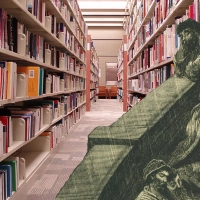

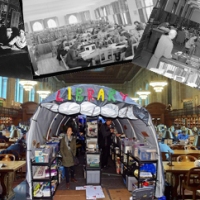
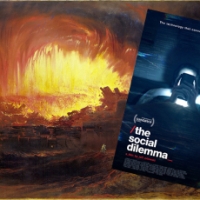
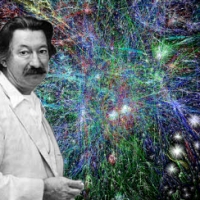

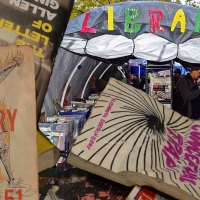


Pingback: Things I learned while working as a reference librarian | LibrarianShipwreck
Pingback: From Net Neutrality to the Net’s New Reality | LibrarianShipwreck
Pingback: Librarian Was My Occupation – Remembering the the People’s Library of Occupy Wall Street | LibrarianShipwreck